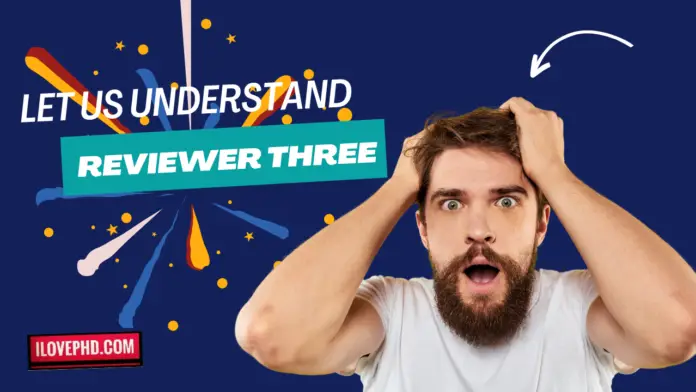Have you ever aimed to publish groundbreaking research, only to be met with comments like “unclear” or “needs more justification”? Welcome to the wonderful world of academic publishing, where the elusive Reviewer Three reigns supreme (or supreme jerk, depending on your perspective). In this article, ilovephd reveals the mystery behind reviewer three in academic publishing and the peer review process.
Peer review got you down? Reviewer Three might be a myth, but their critiques are real. Learn how to navigate the (sometimes brutal) world of academic publishing.
Who (or What) is Reviewer Three in Peer Review?
Reviewer Three isn’t a real person, but rather a symbolic figure representing the most critical reviewer in the peer-review process.
Peer review is a cornerstone of academic publishing, where experts assess research papers for quality and credibility. Ideally, reviewers provide unbiased, constructive feedback.
But sometimes, you get Reviewer 3 – the one who takes “constructive criticism” to a whole new level.
Why Do We Need Reviewer 3?
Let’s be honest, facing Reviewer Three’s critical feedback can be tough. But here’s the thing: thorough and critical review is essential for academic publishing. It ensures the research is:
- Scientifically sound: Reviewer 3 embodies the importance of scrutinizing methods and data analysis.
- Original: No groundbreaking ideas here! Reviewer 3 helps ensure your research brings something new to the table.
- Relevant: Is your work aligned with the journal’s focus? Reviewer 3 might point out if your research strays from their area of interest.
Reviewer One vs. Reviewer Three
The peer review process isn’t a one-person show. Reviewer One is the first to chime in, setting the initial tone for the evaluation. Their feedback can influence subsequent reviewers, including our friend, Reviewer Three.
Here’s the gist:
- Reviewer 1: The initial reviewer, offering a first look and potentially influencing the review process.
- Reviewer 3: The symbol of critical scrutiny, pushes authors to tighten their research and strengthen their arguments.
Both reviewers play a vital role. Reviewer One provides an initial assessment, while Reviewer 3 pushes you to excel.
Remember, Reviewer Three isn’t your enemy. Their critiques, however harsh they may seem initially, can ultimately strengthen your research and make your published work more impactful. So, the next time you face reviewer feedback, take a deep breath, channel your inner academic warrior, and use it to improve your research!

